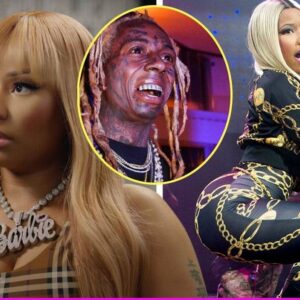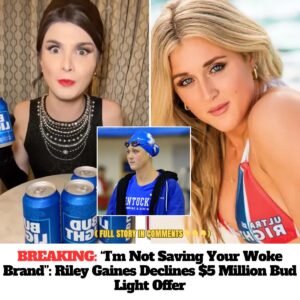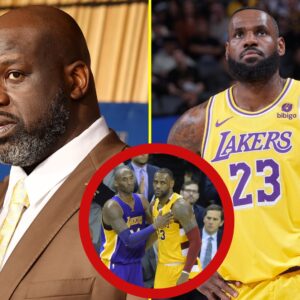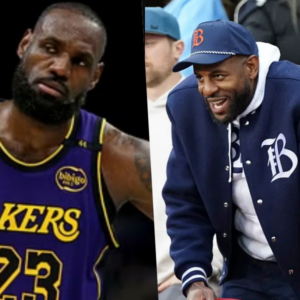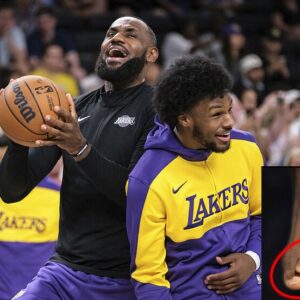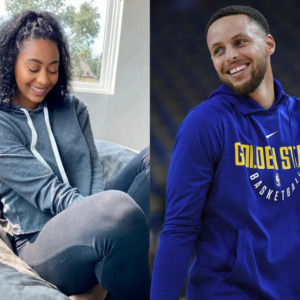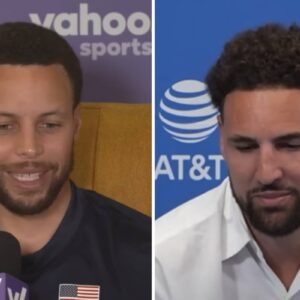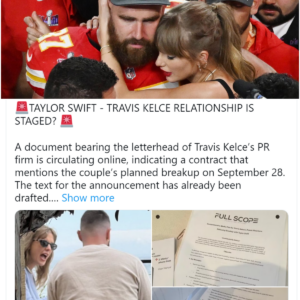The man, a former gang leader named Duane Keith Davis, has said the four shots that killed the rapper in 1996 came from the vehicle he was riding in.
Las Vegas Police Charge Man With Murder of Tupac Shakur
Officers said the investigation into the killing was reinvigorated in 2018 after the self-described gang member, Duane Keith Davis, admitted to multiple media outlets that he was involved.
“27 years. 27 years. For 27 years, the family of Tupac Shakur has been waiting for justice. We are here today to announce the arrest of 60-year-old Duane Keith Davis, a.k.a., Keithy D. for the murder of Tupac Shakur. Davis was arrested this morning by my L.V.M.P.D. Criminal Apprehension team, and this investigation started on the night of September 7th, 1996. It is far from over.” “Prior to September 7th of 1996, as we all know, Tupac Shakur was an artist who was signed with death Row Records. And that death Row Records and its CEO, Marion Suge Knight, were closely affiliated with the Mob Piru criminal street gangs, and that they had an ongoing feud with the South side, Compton Crips. Duane Davis was the leader and shot caller of the South side, Compton Crips. And both of these gangs operated out of the Southern California area of Compton. On the night of September 7th of 1996, Tupac Shakur, along with Suge Knight and members of their entourage, which include members of Mob Piru, came to Vegas to attend the Mike Tyson fight at the MGM Grand Garden Arena. Members of the South Side Compton crips, which included Duane Davis, along with his nephew, Orlando Anderson, were also in attendance at the same event as both were leaving the fight. Members of Death Row Records spotted Orlando Anderson near an elevator bank inside the MGM, and at that time they began to kick and punch him near that elevator bank. And on this incident, you will see Tupac Shakur, who is wearing a shiny satiny shirt along with Marion Suge knight, who is a large man in a Brown suit punching and kicking Orlando Anderson. Following this incident, you’ll see hotel security intervene. And then they will leave the area of the fight. Following this incident, Tupac and Suge Knight both left the MGM to make their way to a post fight party, which was to occur at a local nightclub. At the same time, word had spread amongst members of the Southside Compton Crips of what had occurred inside the MGM. And then that’s when Duane Davis began to devise a plan to obtain a firearm and retaliate against shug Knight and Mr Shakur for what occurred inside the hotel against Mr. Anderson. After Davis obtained a gun, he entered into a white Cadillac, along with Terrence brown, DeAndre Smith and Orlando Anderson. Based on our investigation, this is where we know they were seated. At some point in time, as they were in the White Cadillac. Mr Davis took the gun that he had obtained and provided it to the passengers in the rear seat of the vehicle as they were both, as they were driving West on Flamingo Road near cobalt. They located the Black BMW, which was driven by Suge Knight. And in the passenger seat was Tupac Shakur. And as they turned around, they pulled up near the passenger side of that vehicle and immediately began shooting at Mr. Knight and Mr. Shakur. Following that shooting, the White Cadillac fled the area southbound on cobalt. And as our after our officers arrived on scene, Tupac was later transported to the University Medical center, where he’s treated medically and died approximately six days later on September 13.
Officers said the investigation into the killing was reinvigorated in 2018 after the self-described gang member, Duane Keith Davis, admitted to multiple media outlets that he was involved.Credit
Credit…Getty Images/Archive Photos, via Getty Images
By Joe Coscarelli and Julia Jacobs
Sept. 29, 2023
More than 25 years after the killing of Tupac Shakur became a defining tragedy in hip-hop, a self-described gang member who has repeatedly proclaimed that he participated in the drive-by shooting was indicted on a murder charge, Las Vegas prosecutors said on Friday, reviving a blockbuster investigation that had long stalled.
The man, Duane Keith Davis, has said in interviews and a memoir that he was in the front passenger seat of the white Cadillac that pulled up near the vehicle holding Mr. Shakur after a 1996 prizefight between Mike Tyson and Bruce Seldon in Las Vegas.
The 25-year-old rapper was shot four times and died in a hospital less than a week later.
A grand jury in Clark County indicted Mr. Davis on one count of murder with use of a deadly weapon, plus a gang enhancement, a prosecutor said in court on Friday. Mr. Davis, whose arrest was earlier reported by The Associated Press, is in custody without bail.
ADVERTISEMENT
SKIP ADVERTISEMENT
Despite plentiful speculation, evidence and reporting across nearly three decades, no charges had ever been filed in the shooting of Mr. Shakur, who was one of the most popular artists of the 1990s, with tracks that brought poetic gravitas to confrontational gangster rap. But talk of the case was revived in July, when the Las Vegas police executed a search warrant at a home in Henderson, Nev., connected to Mr. Davis.
Image
Sheriff Kevin McMahill, who leads the Las Vegas Metropolitan Police Department, at a Friday news conference about Duane Keith Davis’s indictment.Credit…John Locher/Associated Press

Marc DiGiacomo, a chief deputy district attorney in Clark County, said in court on Friday that Mr. Davis was the “on-ground, on-site commander” who “ordered the death” of Mr. Shakur and the attempted murder of Marion Knight, the rap mogul known as Suge, who was driving the car holding the rapper.
It was not immediately clear whether Mr. Davis had a lawyer.
In his 2019 memoir, Mr. Davis, who goes by the name Keffe D, recounted a gang dispute that escalated after Mr. Shakur and his associates beat up Mr. Davis’s nephew, Orlando Anderson, following the boxing match at the MGM Grand hotel.
“Them jumping on my nephew gave us the ultimate green light to do something,” Mr. Davis said in the memoir, “Compton Street Legend.” “Tupac chose the wrong game to play.”
According to a copy of the indictment filed in Clark County District Court, prosecutors accused Mr. Davis of obtaining a gun “for the purpose of seeking retribution against” Mr. Shakur and Mr. Knight, and of handing off the weapon either to his nephew or someone else in the Cadillac with “the intent that this crime be committed.” Mr. Davis is the only person in the car who is still alive.
Editors’ Picks

A Magical Tour of Christmas Markets Along the Rhine

Did the Grinch Come for the Office Holiday Party?

The Fantasy of the Fun TV Dad
Mr. DiGiacomo acknowledged in court that the broad outlines of what had occurred that night were known to the police as far back as 1996.
“What was lacking was admissible evidence to establish this chain of events,” the prosecutor said, noting that Mr. Davis then began to describe his role publicly. “He admitted within that book that he did acquire the firearm with the intent to go hunt down Mr. Shakur and Mr. Knight.”
At a news conference on Friday, the Las Vegas police confirmed that Mr. Davis’s own words reinvigorated their case, starting with a television appearance he made in 2018. “We knew at this time that this was likely our last time to take a run at this case,” Lt. Jason Johansson of the Las Vegas Metropolitan Police Department said.
Mr. Davis had avoided directly naming the person who opened fire in recent interviews. But in a taped confession released by a former Los Angeles Police Department detective who investigated Mr. Shakur’s murder, Mr. Davis told the police that it had been Mr. Anderson, his nephew, who was known as Baby Lane.
Mr. Anderson was questioned by officers investigating Mr. Shakur’s death but was killed in a shooting in 1998.
In his memoir, Mr. Davis, who has also been known as Keefe D, said that after the shooting, the men abandoned the car and walked back to the hotel, picking the vehicle up the next day and taking it back to California. It was cleaned and painted before it was returned to the rental agency days later, Mr. Davis said. By that point it was “too late for any forensics to be accurate and reliable,” he noted.
ADVERTISEMENT
SKIP ADVERTISEMENT
Image

Duane Keith Davis wrote in his memoir, “Compton Street Legend,” that “Tupac chose the wrong game to play.”

Immediately after Mr. Shakur’s death, there was a flurry of activity in the investigation. More than 20 people were arrested in connection with shootings that the police said were suspected to be related gang attacks.
But as the years went on without any charges, Shakur’s killing — and the death of the Notorious B.I.G., his friend turned rival, six months later — fueled conspiracy theories and accusations that the police had not worked hard enough to bring his killers to justice. The Las Vegas police have cited a lack of cooperation from people close to Mr. Shakur as a reason for the stalled investigation.
The killings became the subjects of books, podcasts, TV series and films, further elevating Mr. Shakur — known for albums such as “Me Against the World,” on which he rapped about a life imperiled by violence, and “All Eyez on Me,” one of the genre’s first double albums — to a mythic role in hip-hop.
The investigation into the death of the Notorious B.I.G. was revived by the Los Angeles Police Department in the mid-2000s, ultimately leading to a re-examination of the Shakur killing. Greg Kading, one of the detectives involved in the inquiry, later wrote a book that detailed how investigators convinced Mr. Davis to cooperate with them through a proffer agreement, meaning he could not be charged with a crime based on any incriminating statements he might make in those interviews.
“I sang because they promised I would not be prosecuted,” Mr. Davis wrote in his memoir.
On the night of the shooting, Mr. Shakur had been traveling in a BMW driven by Mr. Knight toward a postfight after-party at Club 662, a new venue backed by their record label, Death Row Records.
ADVERTISEMENT
SKIP ADVERTISEMENT
Mr. Davis, a self-described member of the Crips, wrote in his memoir that he, Mr. Anderson and others had armed themselves and waited in the nightclub parking lot, hoping to confront Mr. Shakur and Mr. Knight, who were associated with the Bloods, about the earlier violence.
When the rapper failed to materialize, Mr. Davis said, the group waiting for him left for its hotel, only to encounter Mr. Shakur and Mr. Knight talking to fans at a red light. “As they sat in traffic, we slowly rolled past the long line of luxury cars they had in their caravan, looking into each one until we pulled up to the front vehicle and found who we were seeking,” Mr. Davis wrote.
Mr. Davis said Mr. Shakur’s crew had committed “the ultimate disrespect when they kicked and beat down my nephew” — an attack thought to be retribution for an earlier robbery of one of Mr. Shakur’s friends. In his memoir, Davis described the “strict code” of the streets that its participants “live, kill and die by.”
“Tupac’s and Biggie’s deaths were direct results of that code violation and the explosive consequences when the powerful worlds of the streets, entertainment and crooked-ass law enforcement collide,” he wrote.
Mr. Davis added that he had been considered a “prime suspect” in both killings, and called writing about the events for his book “therapeutic.”
Sitting for an interview with a rap chronicler known as DJ Vlad this year, Mr. Davis was asked whether he was concerned that his disclosures could lead to a prosecution. Mr. Davis, who was incarcerated for roughly 15 years, in part because of federal drug charges, said he was not scared of prison.
“They want to put me in jail for life?” he said. “That’s just something I got to do.”
News
Nicki Minaj Admitted Lil Wayne’s Jokes About Her Body Led Her to Get Butt Injections
Nicki Minaj has had rumors flying about her rear end for years. She admitted that she’s gotten work done on her butt, but her desire to change…
BREAKING: “I would never accept saving your woke brand, it’s too toxic and dirty”: Riley turns down Bud Light’s $50 million offer
In an era where corporate brands are increasingly attempting to align themselves with social and political causes, the intersection of marketing and activism has never been more…
Breakthrough: Elon Musk invests $1 billion in Mel Gibson and Mark Wahlberg’s new NON-WOKE Movies Studio
In a surprising turn of events, billionaire entrepreneur Elon Musk has announced a substantial investment of $1 billion in a new film production venture led by Hollywood…
BREAKING: Roseanne Barr Joins Forces Non-Woke Production Studio
BREAKING: Roseanne Barr Joins Forces Non-Woke Production Studio In an unexpected move that has sent ripples through Hollywood, comedic icon Roseanne Barr has announced her collaboration with…
Breaking: Mel Gibson’s New Non-Woke Film Studio Will See James Woods Join Him After He Leaves Hollywood
The entertainment world has been shaken by the official announcement that legendary actor James Woods is joining Mel Gibson’s brand-new, non-woke film company in Hollywood. With this…
Breaking: Kid Rock Says “We Need More Toby Keiths and Fewer Taylor Swifts” and Refuses to Join Taylor Swift on a Collaborative Tour.
Breaking: Kid Rock Says “We Need More Toby Keiths and Fewer Taylor Swifts” and Refuses to Join Taylor Swift on a Collaborative Tour. In a music business…
End of content
No more pages to load
